This new electric Mini Cooper SE is a perfect example of what BMW’s trying to do with EVs today, and also unintentionally, the shortcomings of its approach.
Formula E is more than just a new kind of racing. As BMW’s motorsport director told me, the series is a chance to create a direct research and development link between the electric race cars and the electric vehicles automakers hope to sell you soon. There’s a lot to learn about the limits and potential of batteries, and doing so on track translates directly into everyday cars.
For companies like BMW, this series is an opportunity to go racing and show the world just how advanced their electric vehicles are and will be—a new kind of “win on Sunday, sell on Monday.” That’s why Formula E’s 2019 season closer in Brooklyn a few weeks ago was an ideal venue for a brief test of the new all-electric Mini Cooper SE. The racers show everyone how fast and enjoyable EVs can be, and BMW’s on hand with lots of concept cars and demo models to show what you can buy right now, or soon. In theory, everyone wins.
Behind the scenes, however, things were not so rosy. The race happened mere weeks after we learned BMW CEO Harald Krueger is stepping down after just four years amid charges that he was moving too slowly on electrification despite the company’s early lead with the i3 and i8. Krueger was supposed to come to the Formula E race but canceled; also absent was Klaus Fröhlich, BMW’s chief of R&D.
Despite changes at the top, the company is clearly sticking to a conservative EV strategy, a “One Platform Serves All” plan to create architectures that can accommodate internal combustion engines, plug-in hybrids, and fully electric powertrains.
This means whoever runs BMW next must contend with automakers like Volkswagen betting tens of billions of dollars on electric-specific car platforms, to say nothing of gaining ground lost to Tesla.
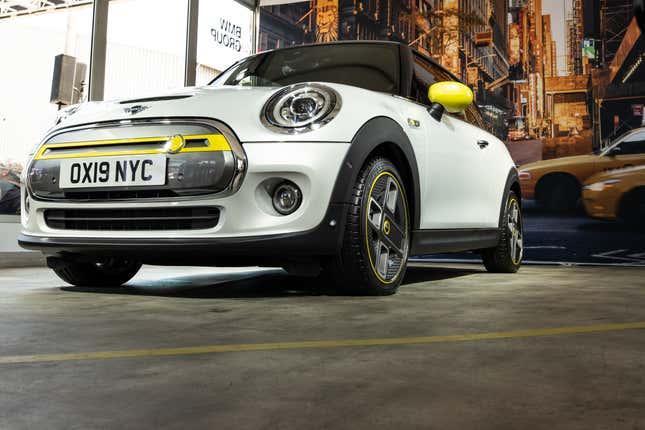
That’s what’s somewhat frustrating about this car, coming from a company desperate for something different. Instead of being a shiny, bold, new electric vehicle, it’s the same Cooper we’ve had since 2014, just with batteries and a motor instead of an engine.
Reception since the debut has been mixed. The Verge says this car helps explain why BMW’s CEO quit; Bloomberg called it “BMW’s best electric effort yet.”
What I can tell you after driving one, albeit briefly, is that it absolutely nails all the qualities that the fans love about Mini, translating those cars’ strengths to an experience free of gasoline and emissions. It is a lot of fun. But until we know more about its exact range and price, among other things, it’s too early to say whether this will be a hit.
(Full Disclosure: BMW invited me to hang out at the Formula E race finale and even offered me a fancy hotel in Brooklyn. I turned them down because I already live in Brooklyn, close to Red Hook in fact, making Formula E the only convenient thing I ever experience in New York City.)
The City Electric
If you’ve seen, driven, owned or been around any Mini Cooper since the F56 generation went into production five years ago, the Cooper SE offers no immediate or outward surprises.
It’s the same car we all know and, in some cases, love, but with its three- or four-cylinder engine yanked out to make room for electric motors and battery cells. Power on the SE is rated at 181 horsepower and 199 lb-ft of torque. It weighs about 300 pounds more than a Cooper S, and is around a half second slower to 60 mph at 7.3 seconds. It remains front-wheel drive.
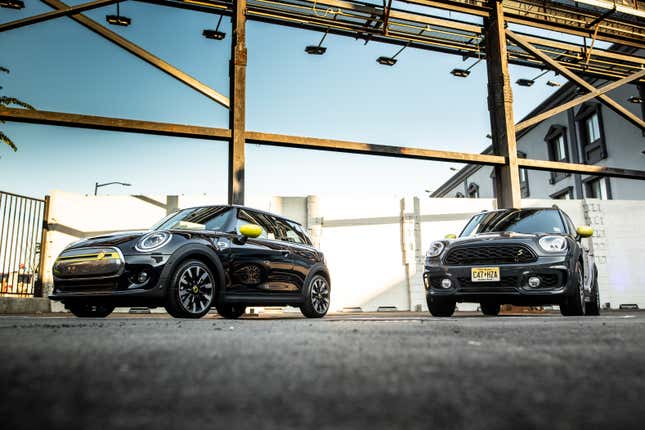
The motor setup is ripped right out of the BMW i3 electric, but flipped around and mounted the front of the car, as is the gearbox. (Remember the i3 is rear/mid-engine and rear-wheel drive.) But it’s the 32.6 kWh battery battery that’s new and different, according to Elena Eder, product development chief for Mini’s electric program.
“What we did is our own specific battery,” she said. “It’s mounted in a low position and goes under the tunnel.” It’s a T-shaped battery, she said, and when it gets installed various chassis-stiffening measures are instituted as well.
As anyone who’s even driven a Tesla will tell you, this setup makes for good weight distribution and a low center of gravity, all of which contribute to very neutral handling. Packaging continues to be one of the more exciting things about our EV future.
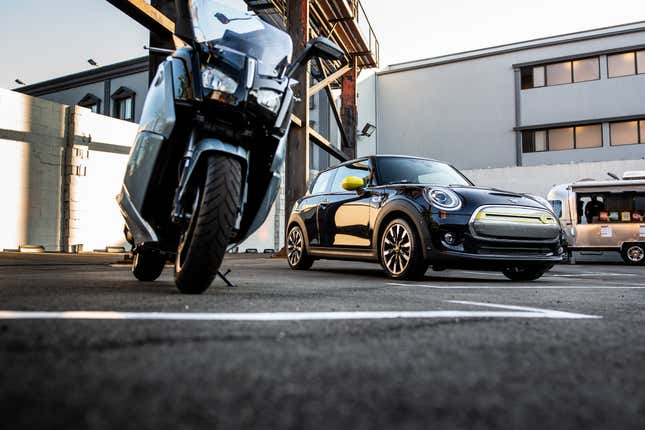
But even that future is something BMW is admittedly uncertain about. The global EV push comes from several places: China’s a big one, as its government and nascent homegrown auto industry seem willing to bypass ICE cars fairly quickly as a corrective to the nation’s horrific air quality. Europe is another, as cities there increasingly ban diesel cars and older ICE vehicles; indeed, some countries have aggressive plans to phase them out entirely.
But at the end of the day, those are far-off plans—a future BMW must prepare for, even if, as Eder says, “we are not exactly sure how EVs will catch on.”
“We’re in an era of transition,” she said of the automaker. “We need flexibility to take that on, and to meet shifting demands.”
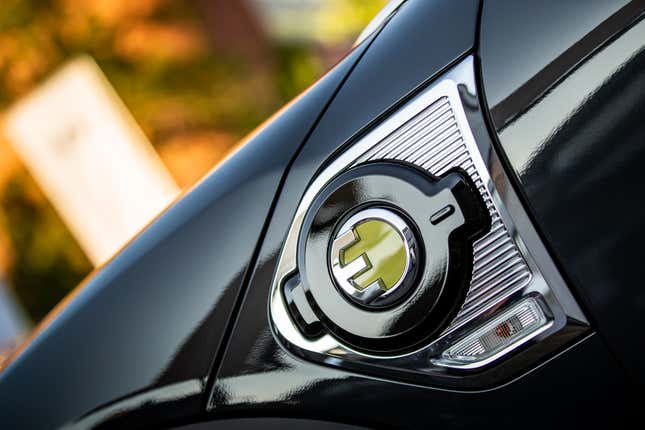
For now that means cars like this Mini, which will come in both gasoline and EV variants, as well as an upcoming 5 Series that will reportedly do the same. And BMW also has newer, bolder, more EV-focused designs on the way, like the i4 and iNEXT. But those will all use the same flexible, modular platforms as regular BMW cars. (Again, this stands in stark contrast to companies like VW, which are doubling down on EV-specific platforms.)
Range figures for the U.S. market have not been determined, but on the European cycle it’s estimated to fall between “235 to 270 kilometers” (146 to 168 miles.) Since the current i3 electric is good for 153 miles, I’m expecting something similar here. BMW also says it can hit 80 percent charge in 35 minutes, which is great if true.

Yet those aren’t mind-blowing range figures for America, where we’re increasingly getting our choice of 200 mile+ EVs and the best Teslas can manage almost 400 miles. But Mini sees the Cooper SE as very much a city car, and it will be marketed as such. Mini’s bread and butter is places like London, San Francisco, New York, Boston, Paris, Berlin, and Amsterdam, so the idea is this electric will suit city drivers just fine.
“We made the clear decision to electrify the classic idea of a Mini,” which was a city car, Eder said. “It’s an urban car. We had to find sweet spot between efficiency and range. For us that’s the sweet spot.”
While it’s true that most Americans only drive about 30 miles a day, I’d also argue that as a city dweller I mostly use cars to get out of the city—and that range would limit me in how far I could go. With a gas car I can get to the Adirondacks. With the e-Mini I’m stuck with Atlantic City.
I also brought up with BMW the difficulties of charging an EV in a city, something I ran into last year testing the Chevrolet Bolt EV, a car I otherwise really liked. How do you charge in a city like New York, where most garages don’t have chargers and if they do, they’re often broken, located in terrible areas or are for Teslas only?
“What we do see is many, many companies in their parking facilities do offer charging, at their offices,” BMW board member Pieter Nota told me. “That is actually quite common.”
It is—but what if your office doesn’t offer chargers or you mostly commute by train? “In [places like] San Francisco, that will be different,” he said. “There’s a higher penetration of chargers there.”
Move to San Fransisco, I guess.
Because despite a deal with VW and ChargePoint, BMW’s not putting resources into a vast charging network the way Tesla did.
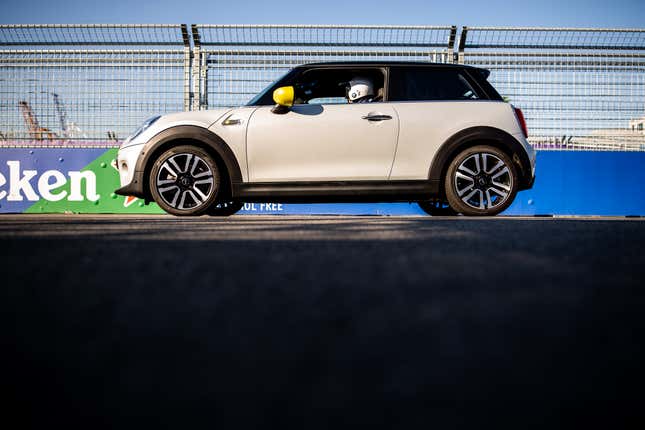
I also get the other criticisms. The modern, compact hatchback city car is something Mini effectively pioneered in England in the 1950s. But when you look at its first real electric offering and something much newer, bolder, fresher and built-from-the-ground up like the Honda E, it’s easy to knock BMW for sleeping on a segment its British subsidiary basically created.
(Supposedly the lovely Mini Rocketman concept will go into production at last as an EV for China; part of me thinks they should’ve started with that and not a five-year-old Cooper full of batteries.)
So there’s skepticism, range anxiety, charging concerns and a years-old design to overcome. I suppose the question is, can the Cooper SE get past all that by offering enough driving thrills?
For some people, I think maybe it can.
On The Track
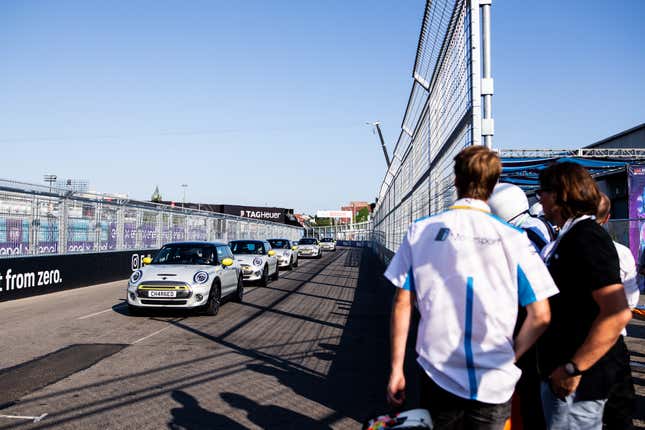
As with every other Mini Cooper I’ve driven, and I’ve owned two now myself, specs only tell part of the story. They don’t often let on just how purely fun these cars are to drive every day. (And great for nailing tight parking spaces, too.) In that department, the electric Cooper S E does not disappoint.
Our driving experience was limited to two full laps around the Brooklyn Formula E course in a lead-follow pattern behind an i8. Probably less than 10 minutes total, and to a top speed of about 50 mph on the circuit, so certainly not enough time to form a full opinion of the drive, let alone anything like what the car’s like to live with.
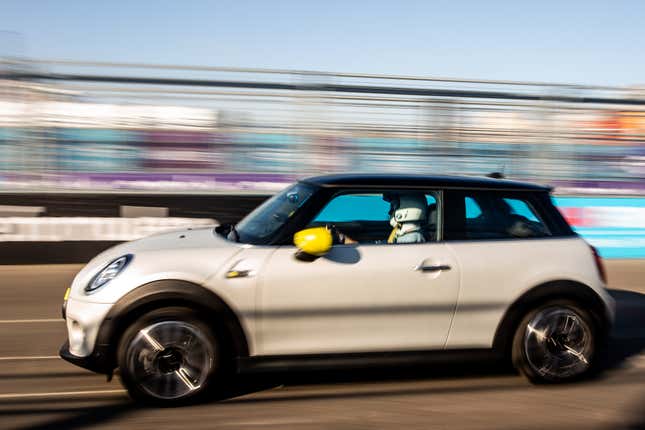
But I was still impressed at how joyful, quick and tossable the Cooper SE was, and how much they got the Mini “feeling” right here. And it speaks to the many performance benefits of driving an EV in anger, when the car is not just another soulless golf cart.
The car’s strong regenerative braking—which can be dialed up or down to your preference—helps you modulate your speed going into a corner without having to actually brake. Indeed, there were some corners at the Brooklyn Cruise Terminal-turned race course where I didn’t have to brake at all following that i8, a novel feeling.
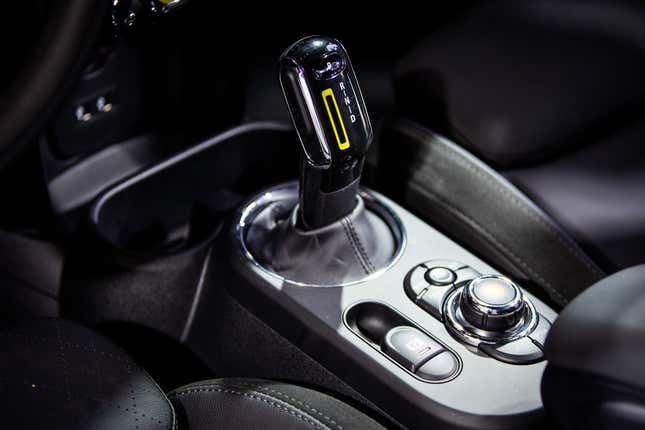
Given the constraints, I never got to really open the Cooper SE up the way I wanted, but it seems pretty quick. It has no trouble getting up to speed, and like all EVs I’ve driven benefits from that instant rush of torque you get right away. It’s not mind-bendingly fast, but it easily kept pace with the i8 leading us.
The best news is Mini didn’t screw up the handling here. Keeping the same body means the Cooper SE can still be small, playful and agile. “Go-kart handling” is a useless marketing term since no production car actually smashes your ribs like one, but the electric Mini has all the cornering attributes that people love about their ICE variants. The EV benefits from that low center of gravity and not carrying a ton of weight over the front axle.
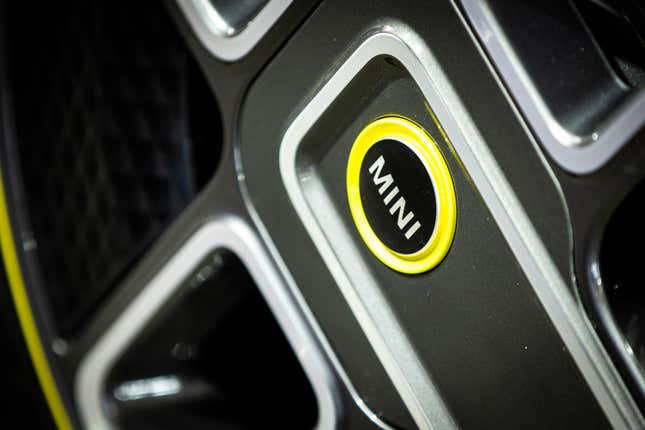
So besides the lack of noise, and torque that comes on pretty instantly, this thing basically feels like a gasoline Cooper S that does not use gasoline. To me as a driver, that feels like a win.
Very Early Verdict
I walked away from this drive more curious than anything else. Curious about its final range numbers, what it’s like to live with one every day, and what it will ultimately cost. Remember, when you pile on the options Minis are seldom cheap, and the entry level EV segment is currently dominated by the Tesla Model 3 but getting increasingly competitive.
But as someone who very much wants his next new car purchase to be an EV, and who is partial to Minis, this is something I would consider—although something with 100 extra miles of electric range is a much more compelling buy in my mind.
What I can say is that for people who love the strong city car qualities of a Mini, want something a bit more upscale than a Bolt, aren’t worried about long-range driving and have good charging options, this will suit their needs in a strong way and still offer a lot of fun when they want it.
But time will tell if that population is big enough to make this car a hit, or if it can build faith in BMW’s electric strategy when everyone else is going bigger.

